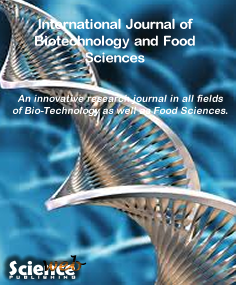Ver ítem
- xmlui.general.dspace_homeCentros Regionales y EEAsCentro Regional Mendoza - San JuanEEA MendozaArtículos científicosxmlui.ArtifactBrowser.ItemViewer.trail
- Inicio
- Centros Regionales y EEAs
- Centro Regional Mendoza - San Juan
- EEA Mendoza
- Artículos científicos
- Ver ítem
Alternative sugar substitutes in canned cherries with improved nutritional value suitable for special diet consumers
Resumen
Cherries in syrup were developed with an improved nutritional profile, which can be a healthier choice for people with special diets by the partial and total replacement of sucrose with less caloric polyols as alternative. The tests performed on Bing cherries were: Witness: sucrose 100%, T1: sucrose-maltitol: 50-50%, T2: sucrose-erythritol-maltitol: 20-30-50%, T3: maltitol-erythritol-mannitol: 55-30-15%. The candied cherries reached a 55°Brix for all
[ver mas...]
Cherries in syrup were developed with an improved nutritional profile, which can be a healthier choice for people with special diets by the partial and total replacement of sucrose with less caloric polyols as alternative. The tests performed on Bing cherries were: Witness: sucrose 100%, T1: sucrose-maltitol: 50-50%, T2: sucrose-erythritol-maltitol: 20-30-50%, T3: maltitol-erythritol-mannitol: 55-30-15%. The candied cherries reached a 55°Brix for all formulations, which were colored with erythrosine and amaranth. Cherries were packaged and sterilized. A similar behavior was observed in all formulations, regarding the evolution of Brix, pH and density of syrups. The sucrose replacement with polyols had a significant effect (α = 0.05) in reducing shear stress and aw in the finished product when sucrose was replaced by polyol formulations tested with respect to the witness with 100% sucrose. Color, showed significant differences (α = 0.05). The T2 formulation reached higher values of lightness, close to red and yellow, being correlated with the results of sensory evaluation. Sensorily, T2 formulation had greater acceptance than the Witness, with 43% preference. According to Art. 535 of Argentine Food Code (1971), the T1 formulation, can be classified as a "low in sugar" food; T2 formulation, as a "reduced caloric value" and "low in sugar" food; while the T3 formulation, as "reduced caloric value" and "no added sugars".
[Cerrar]

Autor
Maldonado, Mariela;
Fonzar, Mauricio;
Carparelli, Andrea;
Polenta, Gustavo Alberto;
Vaudagna, Sergio Ramon;
Denoya, Gabriela Inés;
Bauzá, Marta Mónica;
Videla, Adriana Ines;
Sanow, Luis Claudio;
Robles, Maria Noelia;
Fuente
International Journal of Biotechnology and Food Science 2 (7) : 126-142 (November 2014)
Fecha
2014-11
ISSN
2384-7344
Formato
pdf
Tipo de documento
artículo
Palabras Claves
Derechos de acceso
Abierto
 Excepto donde se diga explicitamente, este item se publica bajo la siguiente descripción: Creative Commons Attribution-NonCommercial-ShareAlike 2.5 Unported (CC BY-NC-SA 2.5)
Excepto donde se diga explicitamente, este item se publica bajo la siguiente descripción: Creative Commons Attribution-NonCommercial-ShareAlike 2.5 Unported (CC BY-NC-SA 2.5)


